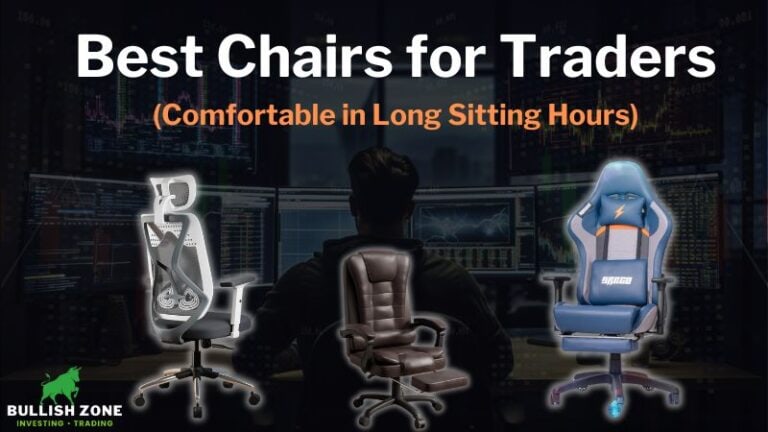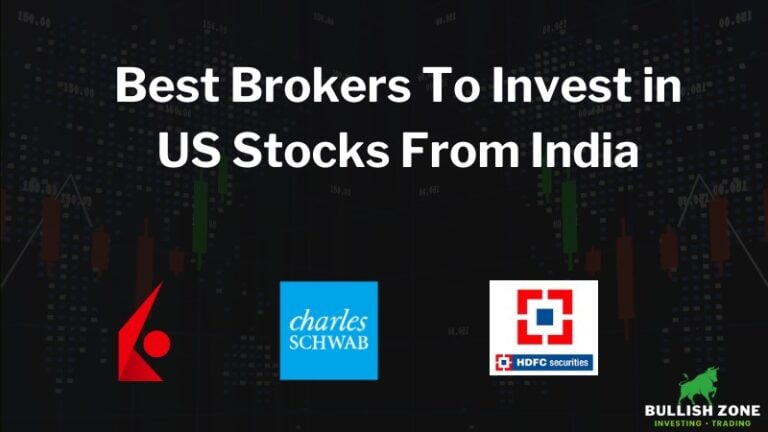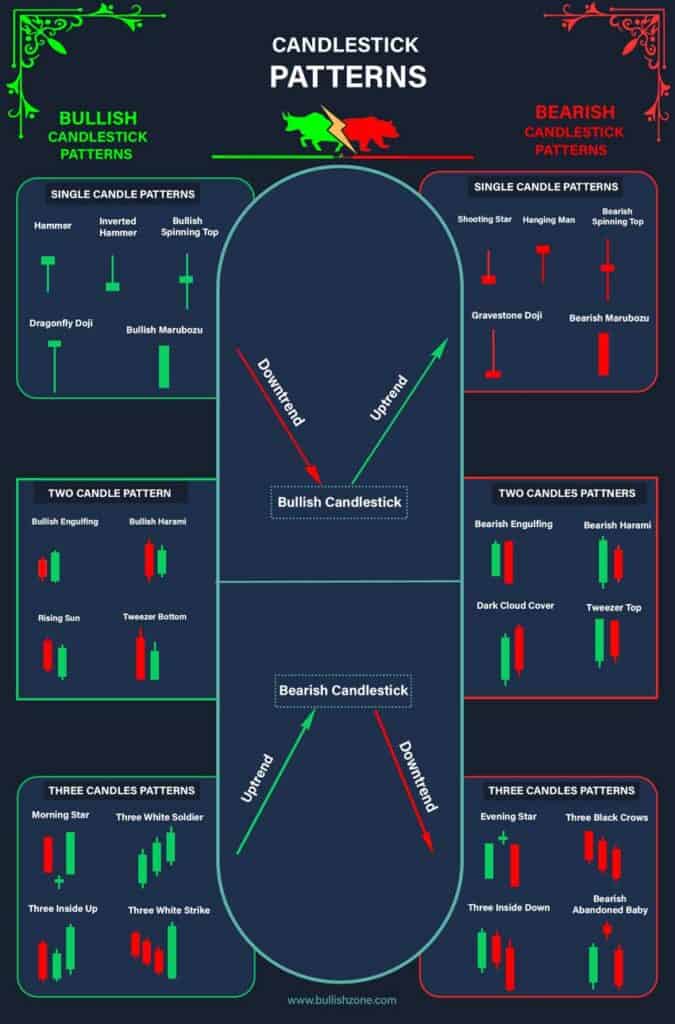Best GPU For Trading in 2025 (for Multi-screen Setup)
Are you building a custom PC for trading but unable to decide on the right graphic card for video output?
I know it’s tough for a non-techie to decide!
But I recently built a PC for my trading setup, and I’ll help you pick the right components to extract smooth performance for chart analysis.
What To Look For in a Trading GPU?
The market is insanely crowded with so many options, but there are several things you must consider while buying a GPU for trading. Otherwise, your experience will not be smooth.
Purpose: Nobody trades the entire day! People perform some other tasks like video editing, gaming, watching movies, etc., during market closing hours.
If you do video editing or play games, you must pick a graphic card that also handles these tasks.
Here, I’m assuming that your main purpose is trading, but you play some lightweight games and perform basic video editing tasks in your free time.
Memory: A minimum of 6GB of VRAM (memory) is recommended for stock trading as it allows for faster processing of large data sets and makes the chart analysis experience smooth.
If you’re a professional trader who uses algo-trading, then you must choose a graphic card with a minimum of 12GB of memory.
Compute Power: Professional traders use AmiBroker, Spider Iris Plus, MetaStock, and other advanced tools for backtesting and strategy simulations.
This software involves lots of computation during strategy simulation and backtesting. So, your GPU must have at least 1400 CUDA cores for a better backtesting experience.
Monitor Ports: Trading generally involves multi-screen setups to watch multiple charts simultaneously.
If you have a large-size trading monitor (49″ or above), then you can split the screen to watch multiple charts.
However, options traders generally use three or four-screen trading setups to analyze index and constituent charts and open interest (OI) data.
So, your GPU must have at least four monitor ports (VGA, HDMI, and DisplayPort) to set up a multi-screen trading setup at home.
Budget: Of course, your budget is the most important factor in choosing a graphic card for trading.
The market has many expensive GPUs, but those are not recommended for retail traders. A budget of ₹15,000 to ₹30,000 is sufficient for good trading GPUs.
Related Guide: Best Trading Monitors in 2025
Top 5 Budget-friendly GPUs for Trading
These are some budget-friendly graphic cards that support multi-screen setups. You can consider these GPUs for trading, light gaming, entertainment, and basic editing.
1. MSI GeForce GTX 1660 Super (6GB)

- Memory: 6GB GDDR6
- CUDA Cores: 1408
- Monitor Port: 3 Display port and 1 HDMI port
- GPU Clock Speed: 1785 MHz
If you’re a beginner in the stock market and don’t have the budget to invest in high-end GPUs, then the Nvidia 1660 Super is a good option.
I recommend MSI GeForce GTX 1660 Super because it supports a multi-screen setup, and you can connect four monitors simultaneously.
It has 3 Display ports and 1 HDMI port that supports 4K resolution at a 60Hz refresh rate.
I started my first trading setup with this graphic card, and its performance was quite satisfactory.
2. GIGABYTE GeForce RTX 2060 (6GB)
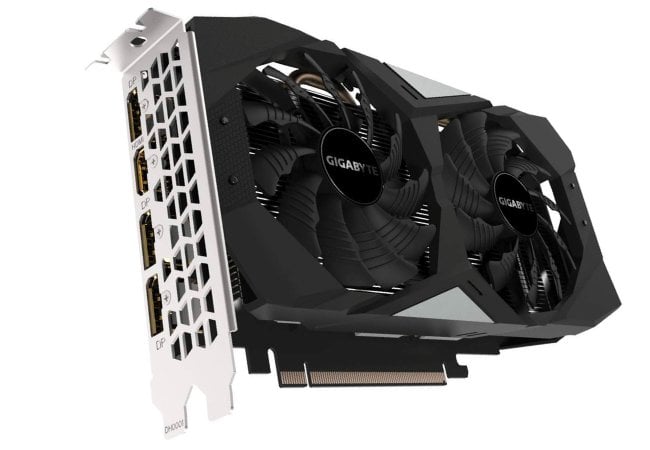
- Memory: 6GB GDDR6
- CUDA Cores: 1920
- Monitor Port: 3 Display port and 1 HDMI port
- GPU Clock Speed: 1755 MHz
Gigabyte GeForce RTX 2060 has a 6GB GDDR6 192-bit memory interface that smoothly handles the backtesting and chart analysis task glitch-free.
It has three Display ports and an HDMI port for video output, and you can connect four monitors simultaneously for detailed market analysis.
If you can extend your budget, I would advise you to skip the GTX 1660 Super and include this GPU in your PC.
3. Asus GeForce RTX 3050 (8GB)

- Memory: 8GB GDDR6
- CUDA Cores: 2560
- Monitor Port: 3 Display port and 1 HDMI port
- GPU Clock Speed: 1852 MHz
The next GPU on my list is Asus GeForce RTX 3050. It has fast computational power that can handle multiple chart layouts and backtest any trading strategy.
If you use AmiBroker for backtesting, then RTX 3050 gives a smooth performance due to 2560 CUDA cores.
In fact, it can smoothly run graphics-intensive software like Adobe Photoshop and Premier Pro for photo and video editing.
4. GIGABYTE Radeon RX 6600 (8GB)

- Memory: 8GB GDDR6S
- Stream Processors: 1792
- Monitor Port: 3 Display port and 1 HDMI port
- GPU Clock Speed: 2044 MHz
I have personally tested this AMD graphic card for trading and gaming purposes for over 6 months, and I recommend it to beginner traders.
It’s a pocket-friendly GPU that comes between the price of 20,000 and 25,000 (I got it for 18,499 with a credit card discount during the Diwali sale).
It gives you ultimate performance during chart analysis and 1080p gaming. I suggest you buy this GPU for your trading PC.
5. Galax GeForce RTX 3060 (12GB)
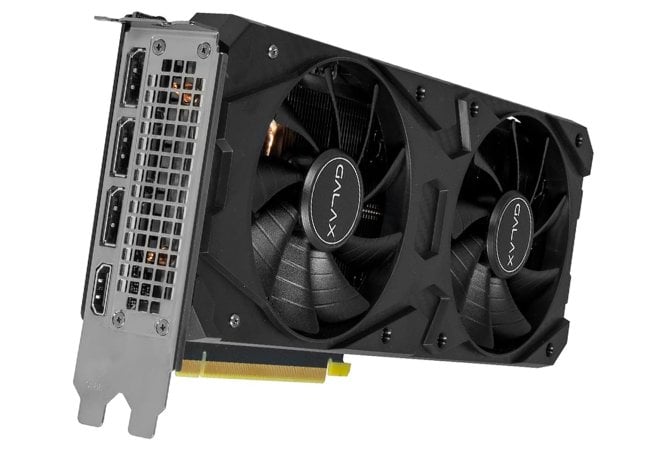
- Memory: 12GB GDDR6
- CUDA Cores: 3584
- Monitor Port: 3 Display port and 1 HDMI port
- GPU Clock Speed: 1777 MHz
This is the last pocket-friendly trading GPU under a 25,000 budget. It extracts great performance in trading and basic video editing tasks.
I still recommend Gigabyte Radeon RX 6600 over this if you need a graphic card for trading and gaming.
Best GPUs For Trading and Video Editing
I have seen lots of traders providing training on YouTube and other video platforms. If you also own a YouTube channel and need a GPU for video editing, these are some great products that give a smoother performance.
Note: The video editing performance will become more smooth with powerful GPUs. However, the price of powerful GPUs will increase. So, choose the one that comes in your budget.
1. GIGABYTE GeForce RTX 3070Ti (8GB)

- Memory: 8GB GDDR6X
- CUDA Cores: 6144
- Monitor Port: 3 Display port and 1 HDMI port
- GPU Clock Speed: 1830 MHz
This is the most affordable graphic card for a trader with a YouTube channel. It gives a decent performance in 3D rending and 4K video editing.
Gigabyte RTX 3070Ti has an 8GB GDDR6X 256-bit memory interface with 2nd generation RT cores and 3rd generation Tensor cores that exceptionally handle the rendering of 4K RAW footage.
It’s an entry-level GPU for video editing that supports four monitor connectivity simultaneously. I only recommend this graphic card to those traders who own a YouTube channel.
2. Asus TUF GeForce RTX 3080 (12GB)

- Memory: 12GB GDDR6X
- CUDA Cores: 8960
- Monitor Port: 3 Display port and 1 HDMI port
- GPU Clock Speed: 1815 MHz
If you’re a trader cum YouTuber and planning to upgrade your PC, then I’ll recommend this Asus Tuf RTX 3080 graphic card for your PC.
It has 12GB GDDR6X memory with 8960 CUDA cores that boost your video editing and trading experience to the next level.
It also extracts high performance in competitive gaming. So, you can enjoy and relax after making a profit from the stock market.
3. Asus GeForce RTX 4070 (12GB)
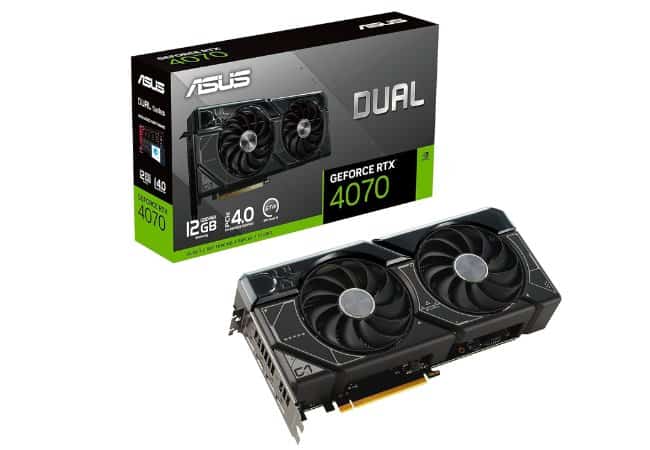
- Memory: 12GB GDDR6X
- CUDA Cores: 5888
- Monitor Port: 3 Display port and 1 HDMI port
- GPU Clock Speed: 2475 MHz
The Asus GeForce RTX 4070 is a versatile champion, ideal for traders and video editors alike.
With 12GB of GDDR6X memory, it effortlessly manages multiple high-resolution trading screens and complex video editing timelines.
The GPU’s rich CUDA core count ensures rapid data processing and smooth video effects rendering.
Its state-of-the-art cooling technology maintains optimal performance during long editing sessions.
4. MSI Radeon RX 6900 XT (16GB)
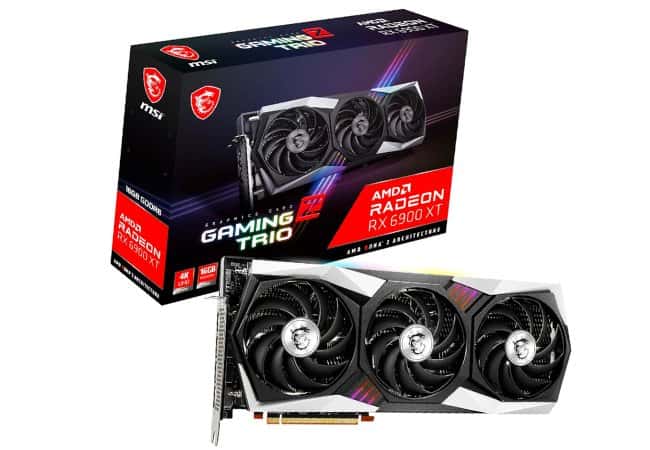
- Memory: 16GB GDDR6
- CUDA Cores: 5120
- Monitor Port: 3 Display port and 1 HDMI port
- GPU Clock Speed: 2425 MHz
The MSI Radeon RX 6900 XT is a powerhouse for both trading and video editing. It has 16GB of GDDR6 memory, which provides ample bandwidth for handling multiple trading monitors and high-resolution video editing projects.
Its advanced stream processors deliver exceptional performance, ensuring smooth playback and quick rendering of video content.
The RDNA 2 architecture enhances overall efficiency, perfect for demanding tasks like color grading and 3D effects.
Additionally, its comprehensive output options, including HDMI 2.1 and DisplayPort 1.4, support a variety of display configurations, essential for detailed financial analysis and video editing workspaces.
5. GIGABYTE GeForce RTX 3090 (24GB)

- Memory: 24GB GDDR6
- CUDA Cores: 10496
- Monitor Port: 3 Display port and 1 HDMI port
- GPU Clock Speed: 1755 MHz
The GIGABYTE GeForce RTX 3090 is the ultimate choice for professionals who excel in trading and video editing.
This GPU features an unparalleled 24GB of GDDR6X memory, offering unmatched processing power for the most intensive trading software and 4K, 8K, or even higher resolution video editing.
The RTX 3090’s Ampere architecture provides advanced ray tracing and AI capabilities, enhancing creative possibilities in video production.
Its robust cooling system ensures sustained peak performance, which is crucial for long editing sessions and continuous market monitoring.
Conclusion
These are some of the best graphic cards that you can include in your trading setup. It has multiple display output ports where you can connect multiple monitors simultaneously. If you’re a trader cut tutor, then choose the high-end GPU listed at the bottom.

